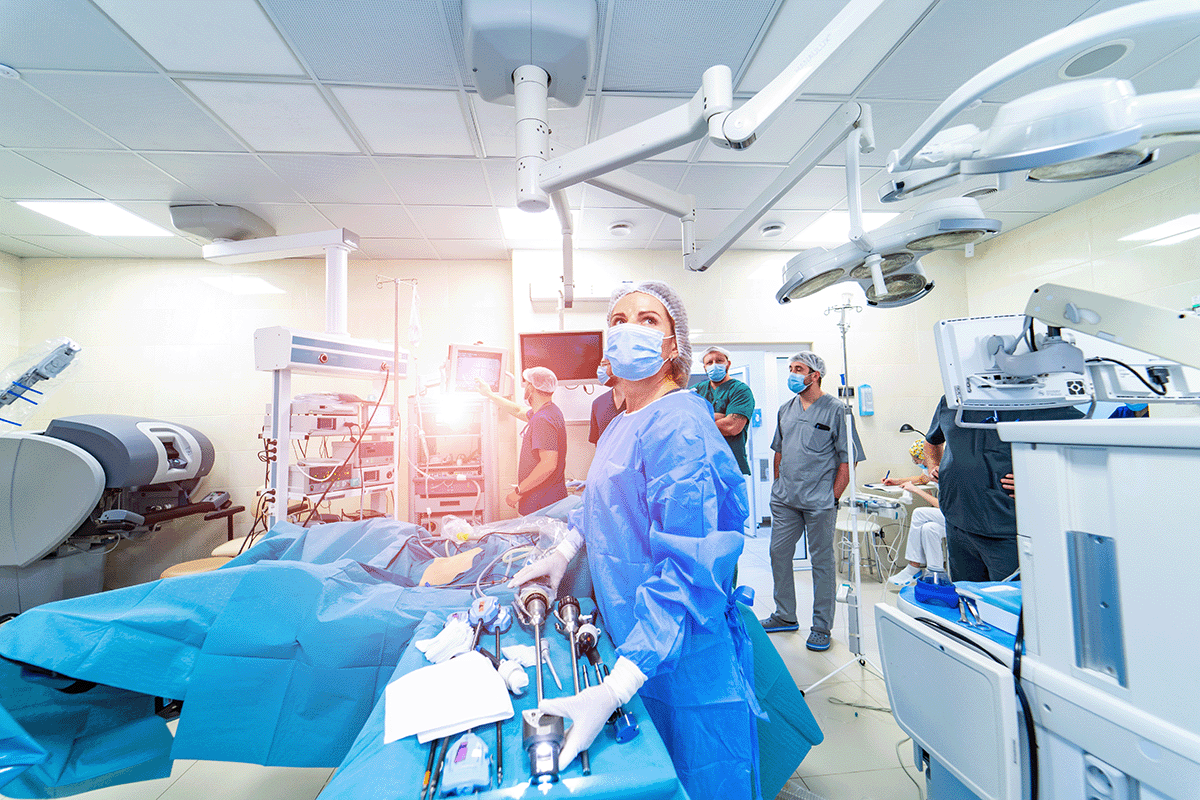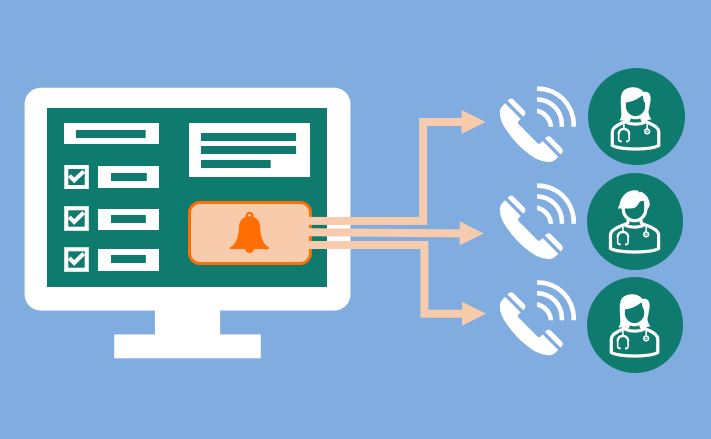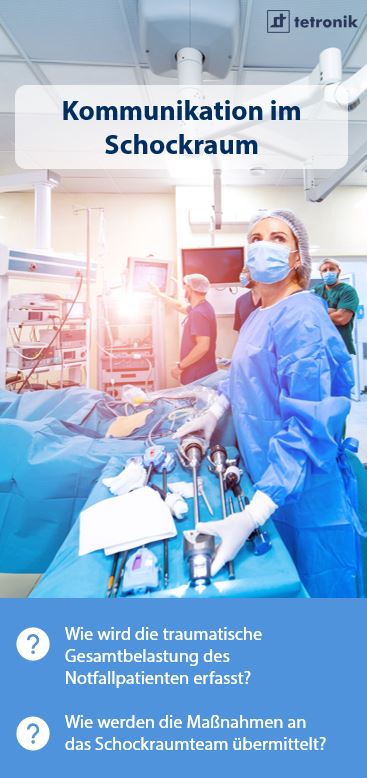At this year's DMEA, tetronik was represented with the DAKS portfolio at three different locations. Spread across the stands of our partners Mitel, SPIE and OR.NET, we had contact with a broad audience and were able to capture a wide variety of voices.

The main topic remains the Hospital Future Act (KHZG) with a focus on the process landscape in hospitals
The Hospital Future Act is intended to fundamentally modernize the German hospital landscape. Hospitals are to expand their IT infrastructure, implement telemedicine and meet a range of digitalization requirements. However, the process landscape in hospitals is very complex. As the KHZG must ultimately apply to all specialist areas, the actual implementation of the KHZG in individual hospitals is still in its infancy. The goal is to link the various areas in such a way that patient data can be seamlessly integrated from admission to discharge. Ultimately, the aim is to simplify the individual work steps and to avoid redundant processes.
This process begins as soon as a patient is delivered by the ambulance service and applies equally to emergency events, such as a heart attack, during a patient's stay. Important patient data is recorded here and could be used seamlessly, e.g. for the hospital information system (HIS).
The trauma room as an important entry point for digitalization in hospitals
In most hospitals, data is currently still recorded in the trauma room on a paper form. Once the data has been recorded, the trauma room team required for the emergency is put together. This is done by making individual calls one after the other, during which the acute situation of the patient must be briefly described to the respective team member. This process, which is still very common, takes up a lot of valuable time when what is actually needed is urgency.
At DMEA, tetronik presented a solution for the digital recording of emergency data in the trauma room. Patient data is entered directly into a digital form. Based on the completed fields, the emergency is automatically categorized and a corresponding announcement text is generated. When the generated announcement is approved, an automated conference call is started via the DAKS alarm server. The content of the form is read out to all called emergency team members via speech synthesis and can be listened to several times if required.
Digitalization in the trauma room brings several advantages
- The helpers are reached more quickly, they are better informed, coordinated with each other and directed to the scene immediately.
- The trauma room staff have much more time to make the necessary preparations for the arrival of the emergency patient once an emergency has been announced.
- The patient data recorded in the trauma room can be supplemented with further relevant information and transferred directly to the next communication system.
- The consistency of processes involving patient data is guaranteed from the first point of contact.
The digitalized trauma room solution from the DAKS portfolio therefore makes a very valuable contribution to the implementation of the KHZG. As many hospitals are already using DAKS, this is an ideal and easy-to-implement opportunity to use the existing infrastructure to digitalize the aforementioned process.
Download PDF flyer:
Communication in the Trauma Room
Additional requirements for clinic operators
In all digitization efforts, the issue of occupational safety must not be ignored: In hospitals, the focus is first and foremost on the patient. However, occupational safety is also an important aspect of hospital operations. DAKS also offers a portfolio of proven solutions for employee protection, including a personal emergency signal system (PNA) in accordance with the requirements of the German Social Accident Insurance (DGUV).
How DAKS supports hospital operators in implementing the KHZG
The DAKS alarm server supports the implementation of digitalization in hospitals with targeted communication for a wide range of processes:
- Automated alerting in the event of emergencies:
DAKS automatically alerts and coordinates the appropriate medical team in the event of an emergency, such as a heart attack. - Improving communication in the trauma room:
DAKS uses the digitally recorded patient data in the trauma room to start an automated conference call to the required trauma room team. - Efficient team communication and coordination:
DAKS informs and coordinates teams quickly and efficiently. This improves response times and, as a result, patient care. - Increase in occupational safety:
DAKS offers a portfolio of proven solutions for employee protection, including a personal emergency signal system in accordance with the DGUV. - Automatic categorization of alarms:
DAKS can automatically categorize and prioritize incoming alarms based on the data collected. This enables more efficient use of resources. - Real-time monitoring and notification:
DAKS enables real-time monitoring of alarms and events in the hospital and immediate response to them by notifying the relevant parties quickly and efficiently. - Integration with other systems:
DAKS can be seamlessly integrated with many other hospital systems and devices to enable smooth information exchange and holistic digitalization. - Automated logging and reporting:
DAKS automatically logs all incoming alarms and events. The reports provided can be used for audits, quality improvements and legal issues. - Scalability and flexibility:
DAKS is scalable and flexible. In accordance with the specific requirements of the hospital, corresponding modules and extensions offer optimum support for a wide range of application scenarios.
|
Learn more about the contribution of DAKS to digitalization in hospitals! Your contact:
Peter Euler +49 6128 963-414 |



